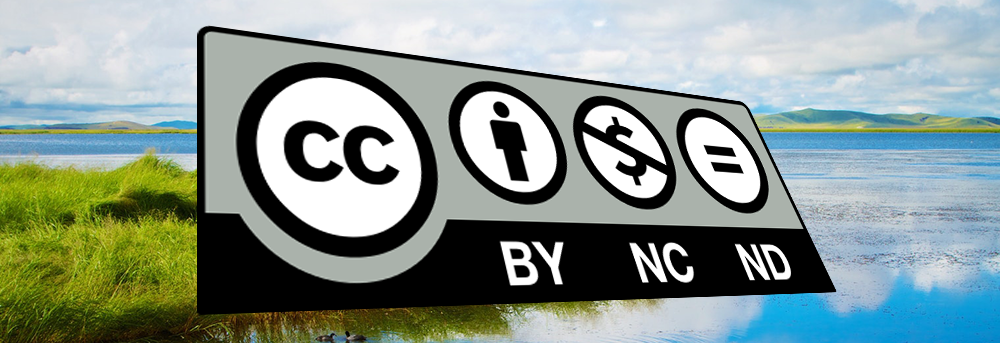Creative Commons licenses – have you ever wondered what they are, why they exist, or how to use them? If so, read on!
Creative Commons licenses are a quick and easy way of licensing creative works for public use, that allow content creators to specify ways in which their works may be re-used by others – often for free, as long as some basic conditions are met. They avoid the need for complex legal agreements, or the need for content creators to surrender acknowledgement of their work. They also give re-assurance to anyone re-using work that they are doing so legally, providing that they stick to the conditions of the license under which a piece of work is released.
The table below summarises seven commonly used CC licenses. These become progressively more restrictive, allowing content creators flexibility in the ways that they share their work.
How do I know if materials are available for re-use under a CC license?
Look out for a license icon (such as ![]() ) or acronym (such as CC BY-NC-SA) , as shown in the table above, to indicate the status of a piece of work. This information will usually be given as part of a credit or copyright statement shown clearly with the piece of work you want to use. If there is no license information given, and no other copyright information is available, then remember the golden rule of copyright – assume that it is not free to use!
) or acronym (such as CC BY-NC-SA) , as shown in the table above, to indicate the status of a piece of work. This information will usually be given as part of a credit or copyright statement shown clearly with the piece of work you want to use. If there is no license information given, and no other copyright information is available, then remember the golden rule of copyright – assume that it is not free to use!
How do I re-use materials using a CC license?
If you want to re-use material available under one of these licenses, check that the reason / purpose for which you want to use the materials fits with the license in question. Unless the work is in the Public Domain, you will need to give credit as specified by the author of the work. Note that you don’t have to use the graphic CC icons shown above, but you do need to specify the license itself – often using the acronym is the easiest.
What about licenses with numbers in the title?
You may notice that some CC licenses have numbers in the acronym (for example, “CC BY 4.0”). This refers to how recent the version of the license is. The current version is 4 (at the time of writing).
Finally…
Find out more about Creative Commons licenses at the Creative Commons website.
Phillip Pierce
Learning Technologist
Learning and Teaching Support Unit (LTSU)
School of Arts & Humanities – Nottingham Trent University
phillip.pierce@ntu.ac.uk MAE012 | 0115 84 83017
